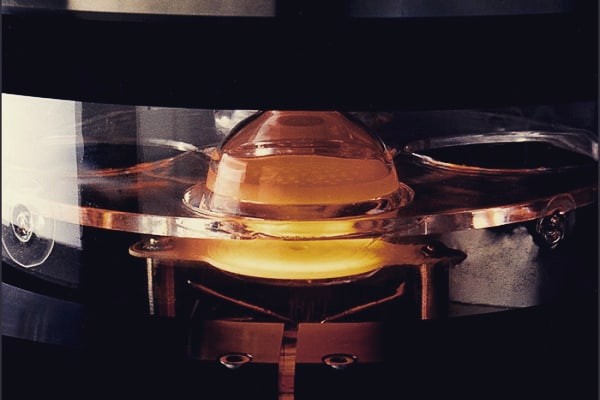
Author: Ali Kosari Mehr
ALD/REALD/PEALD/SALD
Considered as a more recent variation of chemical vapor deposition (CVD), atomic layer deposition (ALD) is a thin-film deposition method. In a conventional CVD process, a mixture of gases comes into contact with a heated substrate so as to culminate in the deposition of thin films. Hence, before reaching the substrate, the reactant gases may homogeneously react together to form particulates which could be included in the growing films. Notwithstanding, in an ALD process, the introduction of the two reactant gases to the heated substrate occurs in two distinct stages. At the first stage, having been exposed to the first reactant gas, the substrate adsorbs a monolayer of the first reactant. Next, the first reactant gas is pumped out of the chamber. At the second stage, having been introduced to the chamber, the second reactant gas reacts with the monolayer of the first reactant to form a thin solid film on the substrate. Afterward, the remains of the second reactant gas and gas-phase by-products are pumped out of the chamber. The procedure is repeated until a solid film of desired thickness is obtained. Since gas-phase reactions are not likely to happen in ALD, very reactive gases and decreased deposition temperatures can be deployed; however, the deposition rate is relatively low.
There are two significant modifications to the ALD processes:
1- Radical enhanced ALD (REALD): In a conventional ALD process, there are constraints on substrate temperatures required for the successful deposition of films. Illustrating this matter, one can refer to very high temperatures in which the first reactant gas may decompose before it has a chance to react with the second reactant gas. Accordingly, utilizing an energetic radical, one can mitigate the effect of these temperature constraints, albeit to some extent, such that the deposition of films could be possible at room temperature in some cases. This process is called radical enhanced ALD. Moreover, one of the easiest means of creating radicals is through glow discharge in a chamber having low pressure. This process is called plasma-enhanced ALD (PEALD).
2- Spatial ALD (SALD): In this process, the sequence of coming into contact with the precursors and purge gases occurs by a substrate alternating between two spatially separate zones in each of which there is a constant flow of one reactant gas. This method enables roll-to-roll web coating and a continuous in-line process, which is of significance in the industry and market.
References:
- Kääriäinen T, Cameron D, Kääriäinen M, Sherman A, (2013) Atomic Layer Deposition: Principles, Characteristics, and Nanotechnology Applications, 2nd Edition. John Wiley & Sons, pp 1–32 Webpage
-
 20 Aug, 2022What is Auger electron spectroscopy?
20 Aug, 2022What is Auger electron spectroscopy? -
 13 Jul, 2022Classification of vacuum pumps
13 Jul, 2022Classification of vacuum pumps
